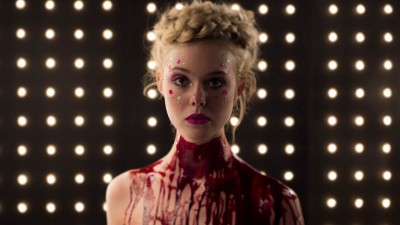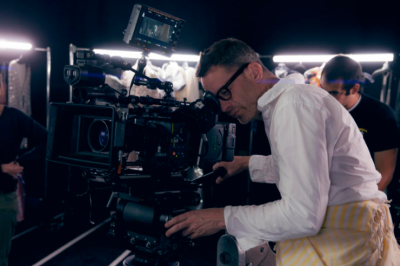Editing is always a critical component of Nicolas Winding Refn’s films. From the PUSHER Trilogy to VALHALLA RISING and to his more recent and more notable, DRIVE and ONLY GOD FORGIVES, there is a visual lyricism that drives each film ever forward be it with character development as in DRIVE or visual hypnosis as in ONLY GOD FORGIVES. The result is always striking and memorable, and never moreso than with Refn’s latest, THE NEON DEMON. A director who believes strongly that, “You have those few people around you in the technical side where it’s like you know we all kind of share the same vision”, with THE NEON DEMON, the editing takes on an even larger role as the music and Cliff Martinez’ score become a direct influencer of not only the film’s overall design, but editing and pacing with the visuals and the musicality feeding off one another.

Starring Elle Fanning, THE NEON DEMON is the story of fresh-faced and virginal 16-year old Jesse, new to town with a life’s dream and ambition of a being a top model – no matter what the cost, Refn treats us to a visual and emotional spectacle built upon necrophilia, addiction, jealousy and envy, seedy rapists, the down and dirty cut-throat world of beauty and fashion, celebrating the unsavory, worshiping the the viciousness of beauty and the decline of morality. THE NEON DEMON is a visual wonder, pushing the boundaries of morality and societal acceptance in this exploration of “vicious beauty.” Described by Refn as a teenage horror film, there is a heightened reality that is both fueled by and devolves into something primal and instinctual, penetrating the mind, osmotically becoming a part of you. Celebratory in its use of color with jeweled violets, turquoises and deep greens, cinematographer Natasha Braier incorporates geometry with rapier-edged framing for a Giallo-influenced experience. THE NEON DEMON perhaps more than Refn’s other films is indeed “an experience” with calculated reactions resulting from this sexualization of the world and obsession with beauty.

Self-described by Martinez as a “three-headed monster” – Refn, three-time collaborator Martinez and six-time Refn editor Matthew Newman – have a synergy, or “incestuous” working relationship that defies description. According to Refn, “We’re the first people who talk about what I would like to do and kind of the idea behind it or whatever kind of pop up in our conversations. If I call up and say, ‘Hey Cliff, I want to do a movie about women”, he goes, ‘Okay’, and it becomes about musical inspirations. I’ll start writing the script. . . He reads the script [and] we talk about the script in terms of the musical point of view. Then I start shooting.” With THE NEON DEMON, Refn prepared a track list of music that would play on set, “music that would inspire the movie.”

By night, Refn and Newman would start editing. With THE NEON DEMON, his base of operation was Refn’s pool house. According to Refn, “If Matt ever called during the day and said, ‘I think we need this or we need that’, I would always listen and say, ‘Okay. So we need an extra close-up of something or whatever.’ . . . Then editorially, Cliff is the first person to see anything. . .Then Cliff and I start talking about music.” Finding the perfect musicality of a post-disco pulse to fulfill the editorial needs of the film, Martinez’ score serves as a counterpart to the imagery while complementing its beauty.

During the recent Los Angeles press conference, I had a chance to ask Nicolas Winding Refn and Cliff Martinez about the editorial process of THE NEON DEMON and “the three-headed monster” at work. Take a listen to what they had to say. . .












